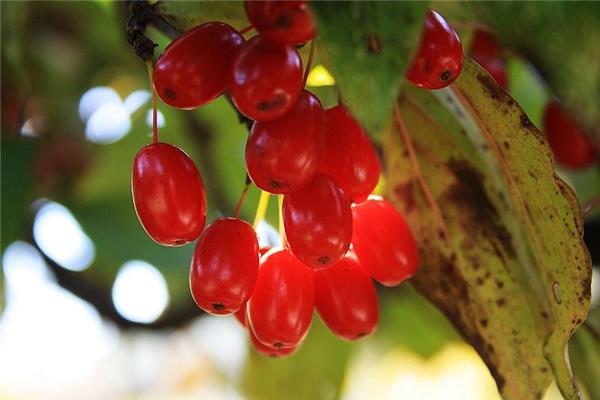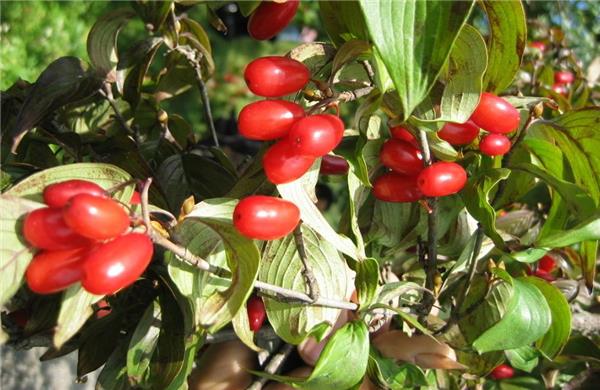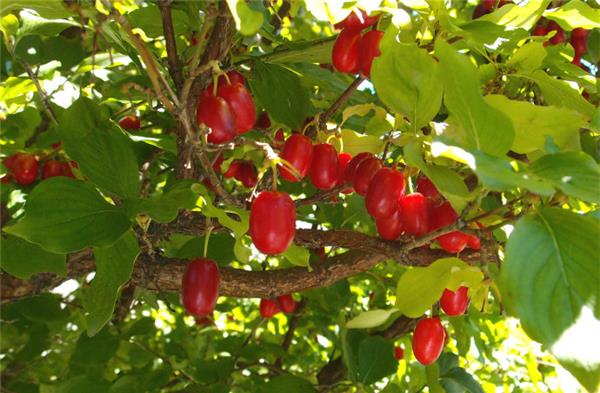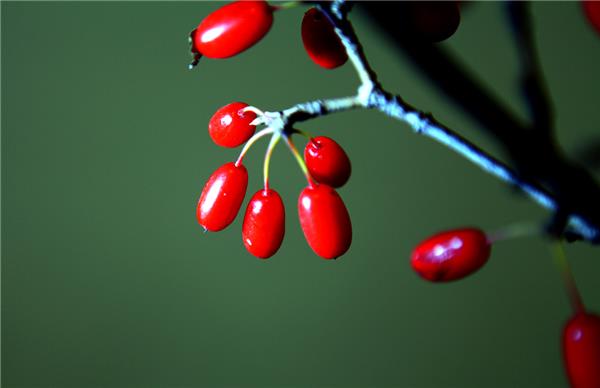Disease and pest control of Cornus officinalis and its function and efficacy
Cornus officinalis is a kind of tree species with both ornamental effect and medicinal value. its fruit not only has a pleasing effect, but also can be used in medicine to treat diseases such as hyperglycemia, shock, inflammation and so on. it is a tree species with high economic benefits.

Propagation methods of Cornus officinalis
To propagate with seeds, you can also use cuttings and strips to propagate.
Seed reproduction: in autumn, the fresh seeds without flesh will be stored in 2 to 3 times wet sand, and the sand will be hidden in the sunny place outdoors, covered with grass, and often keep moist. From March to April of the following year, 30% of the seeds can be sown when 40% of the seeds germinate. Strip sowing, ditching according to row spacing of 20 to 30 meters, ditch depth of 3 meters to 5 meters, covering soil of 2 meters to 3 meters after sowing, adding a layer of grass to keep the border surface moist, seedlings can emerge one week after sowing until the next spring. If the condition of fertilizer and water is good, after emergence, it can grow to 60 to 100 centimeters high in the same year, and it is generally planted in the prepared plot after 2 years. It is best to choose seedlings in cloudy days, transplant with soil, and water them in time to improve the survival rate. After planting, the branches clustered at the base should be cut off, leaving only the trunk.
Cuttage propagation: one-year-old shoots with terminal buds were selected in the middle and last ten days of May and cut at 15 ~ 20 cm. When the upper part was left with 3 ~ 4 slices, the lower part was cut into an oblique orifice and soaked in ABT rooting powder 50PPm solution for half an hour. Then the seedling bed of 20C~25 ℃ began to take root after 10 days, during which high humidity should be maintained, or the upper part should be properly sheltered for sunshade. Strengthen fertility management and plant seedlings before winter or in early spring of the following year.
Striping propagation: 1-2-year-old branches near the ground bend after autumn or before bud germination in spring, cut the skin near the trunk, bury the branches in the soil, fix and press them, and expose the top of the branches to the ground, so as to strengthen the management of fertilizer and water. In the second winter or the third spring, it can be separated and transplanted from the mother plant.

Control of Diseases and insect pests of Cornus officinalis
1. Liuxuedun scale: spraying 3 to 5 Baumedu stone sulfur mixture to the plant in winter, spraying 95% of the parasite emulsion and 2000 times of the imidacloprid wettable powder during the nymph incubation period.
two。 Green-tailed silkworm moth: it can be trapped and killed by black light in the adult stage, and the larval stage can be sprayed with 800 times of 90% crystal trichlorfon solution.
3. Large coir moth: it can be killed by spraying 7000 times of 90% crystal trichlorfon or 20% diflubenzuron suspension during the vocal period of its larvae.
4. Anthrax: when harming the leaves, the leaves will develop reddish brown spots at the initial stage of the disease. In the middle and later stages of the disease, the disease spots will perforate and fall off. The peak period of the disease is from May to June. When harming the young fruit, it generally develops down from the top of the fruit, and gradually extends to the whole fruit, making the fruit black and dry, with the peak from August to September. At the initial stage of the disease, 75% chlorothalonil wettable powder can be sprayed 800 times, three or four times in a row, each time at an interval of 7 days, which can effectively control the disease.
5. Angular spot disease: initially indicated that the leaf has purplish red spots, the edge of the spot is not obvious, the back of the leaf has no obvious symptoms; when the angular spot harms the fruit of Cornus officinalis, it is indicated that the fruit has light brown spots, which can be connected into pieces in the middle and later stage of the disease. the epidermis forms brown patches, affecting ornamental and edible. If it occurs, more than 60% carbendazim wettable powder can be sprayed 800 times at the initial stage of the disease, three or four times in a row, each time at an interval of 7 days, which can effectively control the disease.

Efficacy and function of Cornus officinalis
1. The two-way regulation of the immune system Cornus officinalis has a two-way regulatory effect on immune function, the sugars in Cornus officinalis can obviously promote the immune response, and the total glycosides of Cornus officinalis can obviously inhibit the immune function and is an immunosuppressant. Ursolic acid can kill immune cells in vitro, but intraperitoneal injection can significantly improve immune function. What is more interesting is that the appropriate concentration of some chemical components in Cornus officinalis can obviously enhance the immune function, while the high concentration has an inhibitory effect, which shows the complexity of the chemical composition and pharmacological action of traditional Chinese medicine.
two。 The hypoglycemic effect of Cornus officinalis has been recorded in the treatment of diabetes (called "diabetes syndrome" in traditional Chinese medicine) since ancient times. Japanese scholars use Bawei pills to treat diabetes and achieve a good effect. Further studies show that Cornus officinalis is mainly playing a hypoglycemic effect. Domestic scholars also found that Cornus officinalis has no significant effect on normal blood glucose level, but has a significant hypoglycemic effect on the increase of blood glucose caused by diabetes.
3. Other: Cornus officinalis also has the functions of anti-shock, cardiotonic, anti-inflammatory, bacteriostatic, antifungal, liver protection and so on.

Of course, only properly cultivated can dogwood trees produce good quality dogwood, if the fruit of Cornus officinalis can play its original role, so friends who want to plant and cultivate Cornus officinalis, it is also very useful to learn some knowledge of breeding and nursing Cornus officinalis.
Of course, only properly cultivated can dogwood trees produce good quality dogwood, if the fruit of Cornus officinalis can play its original role, so friends who want to plant and cultivate Cornus officinalis, it is also very useful to learn some knowledge of breeding and nursing Cornus officinalis.
Related
- Wuhan Hospital Iron Tree Blooming Result Was Instantly Frightened by the Gardener Master
- Which variety of camellia is the most fragrant and best? Which one do you like best?
- What is the small blue coat, the breeding methods and matters needing attention of the succulent plant
- Dormancy time and maintenance management of succulent plants during dormancy
- Minas succulent how to raise, Minas succulent plant pictures
- What are the varieties of winter succulent plants
- How to raise succulent plants in twelve rolls? let's take a look at some experience of breeding twelve rolls.
- Attention should be paid to water control for succulent plants during dormant period (winter and summer)
- Watering experience of twelve rolls of succulent plants
- Techniques for fertilizing succulent plants. An article will let you know how to fertilize succulent plants.



